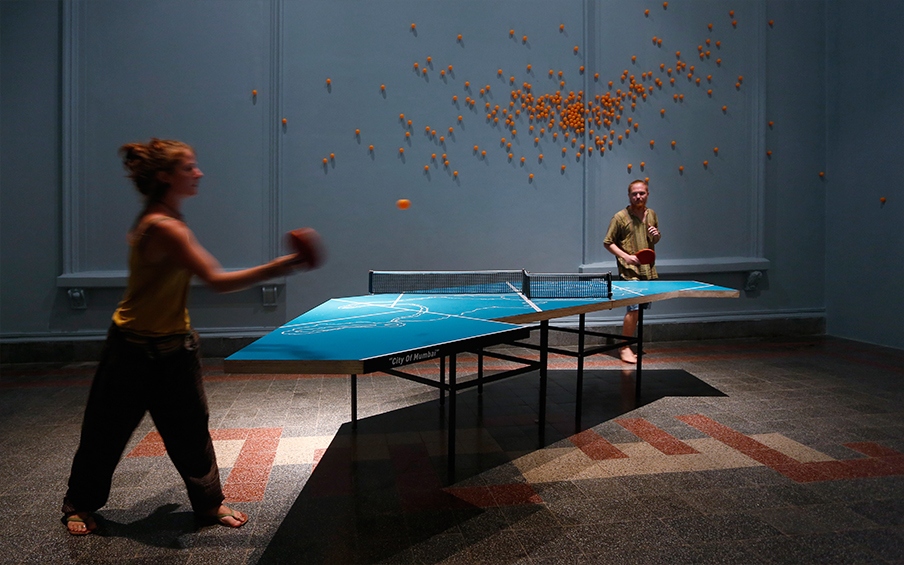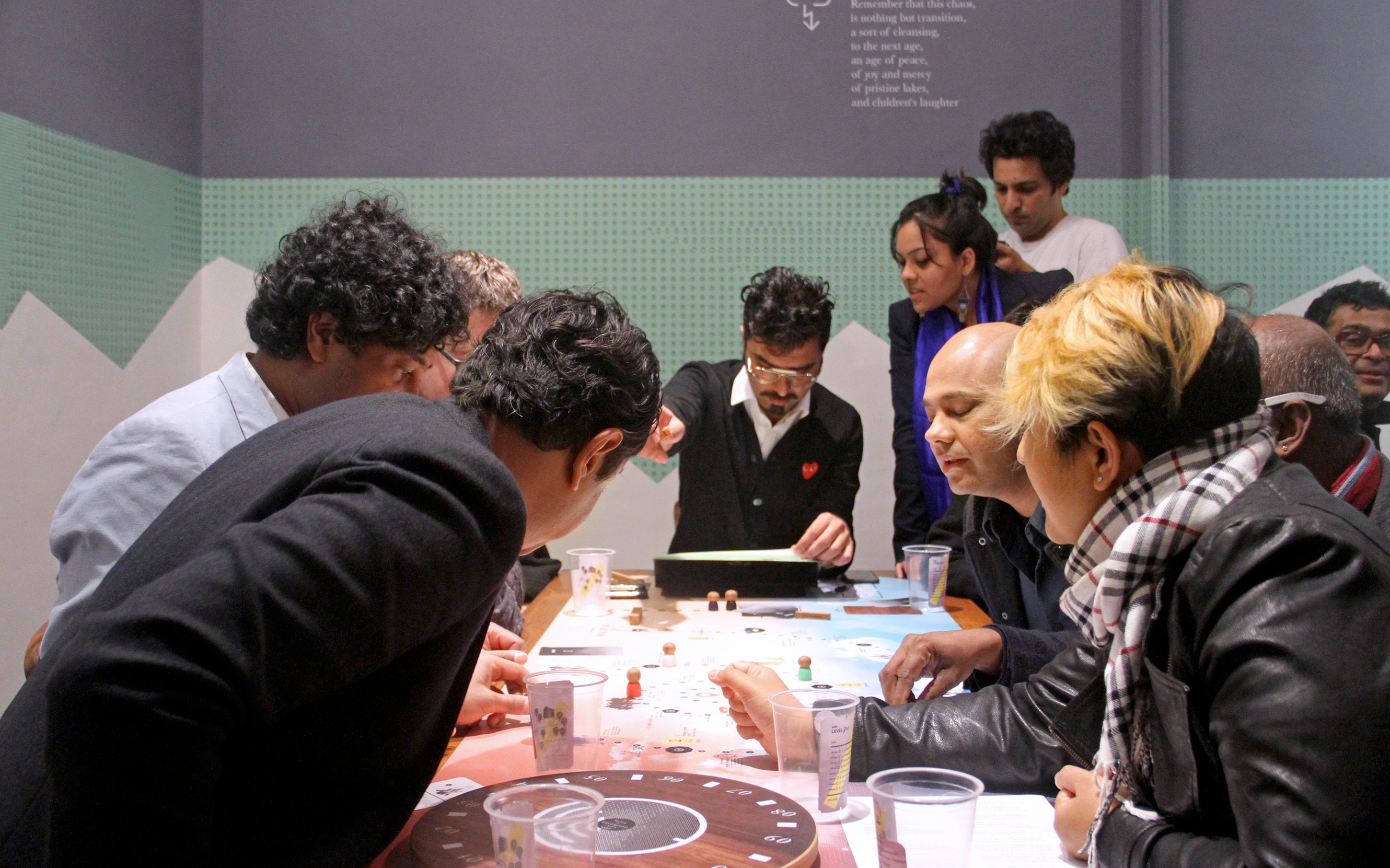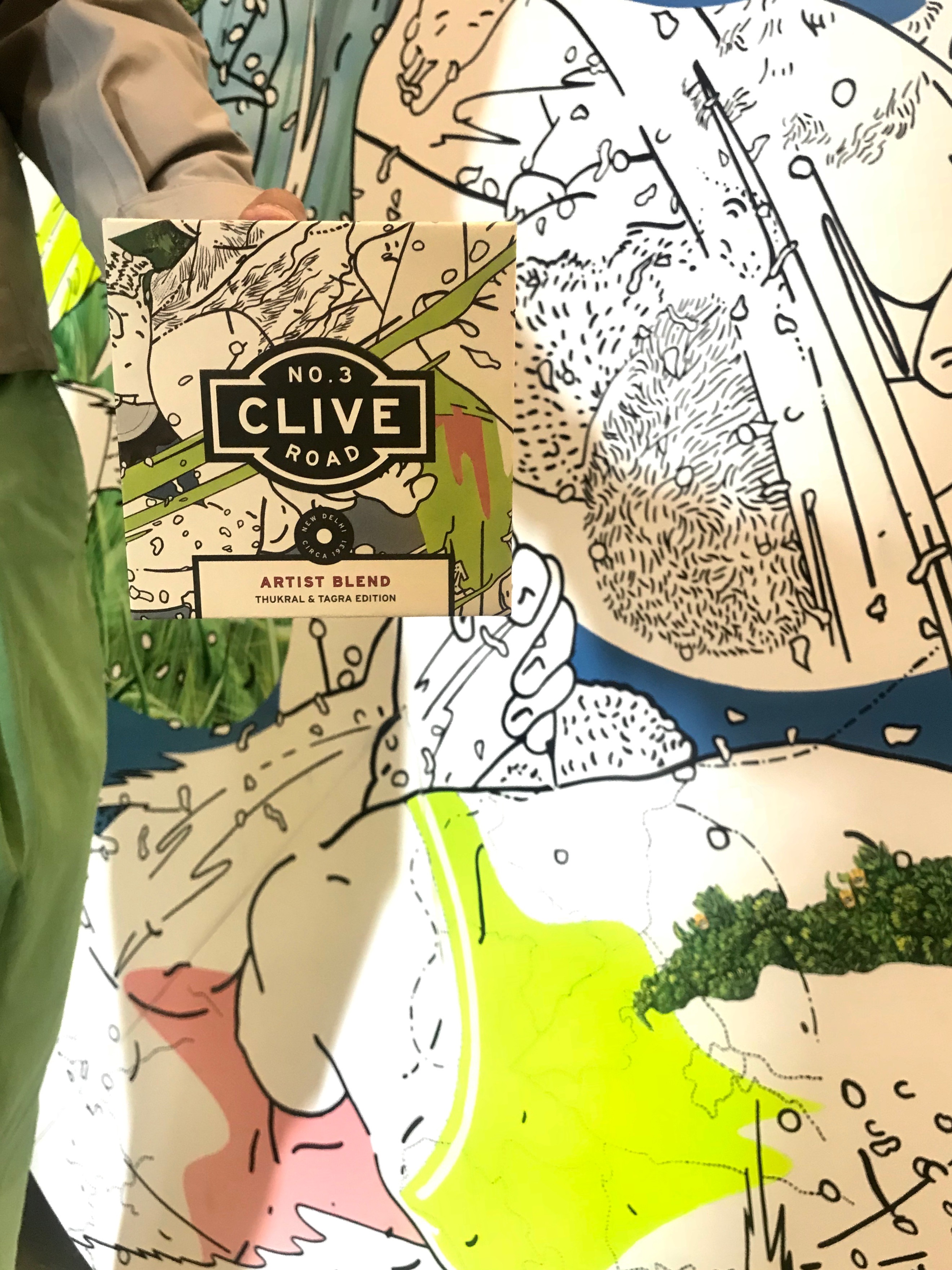T & T

IN CONVERSATION WITH THUKRAL & TAGRA

Gurgaon-based artist duo, Thukral and Tagra, featured on our first Artist Blend, share their thoughts on the arrival of politicised art, their project Bread, Circuses & TBD and how simple conversations can be a work of art.
Your work engages with the audience in a much more meaningful way than we are used to. Tell us a little about your motivation in making art interactive?
When we started working together, there wasn’t any strategy. We believed there were certain signs and symbols to everything – they’re invisible and yet we constantly respond to them. It was important for us to move ahead. When you go to a museum, you don’t want to feel pressurised. There is a sense of compulsion, authority and anxiety – which is exactly what we wanted to respond to. For the longest time, we didn’t even know how to word it. We began to slowly understand the complexities that were fueling it.
By and large we’ve used sports or gaming as part of this nostalgic knowledge which everybody already has built up in their lifetime – every child spends a certain amount of time on a sport they indulge in.
The moment you see we’ve learnt a lot from these regulations, there is a sense of freedom. When a child is playing, there is a sense of freedom which enables them to absorb way more than they would in a restricted environment. These are some of the things that started fueling our art.
“By and large we’ve used sports or gaming as part of this nostalgic knowledge which everybody already has built up in their lifetime.”

“Games People Play” – Bhau Daji Lad Museum, Mumbai
Have you ever observed how the audience interacts with your work? Have you been pleasantly surprised?
It’s a very important part our work. It’s also the strategy we apply to view it. We’re very aware when the work is graduating through this experience. At times, we’ve created work which is to be finished by people. The work is incomplete without our viewers.
“The work is incomplete without our viewers.”
How do you make sure the audience isn’t hyper-aware of you watching them?
At times, we’re the game instructors. Other times, our team is there. Sometimes we train people and at times we leave it open. We once displayed musical chairs at a museum. Nobody wants to give us space anymore! We’ve had over 50 thousand people come and play table tennis with our work for three months. These strategies are really important to us – we see this as an opportunity to absorb human behaviour.
“We’re not just working in this Gurugram studio, we’re operating in a global system. Even the “Glocal” is very aged at this point.

“Walk Of Life” – Level 01 – Khoj International Artists Association, Delhi
Artists have a voice, do they also have a responsibility? Is there a disconnect between art that is produced today and the way it is consumed.
As we develop and we grow in this moment, there are a lot of complexities which we are aware of. This was not the same 10 years ago when we started the practice. It was more about object making, finding the aesthetic and consistency. We evolved and it took some time to understand what it means to work in a public realm. How does a collection operate? Why do you even need a collection? What does an artist even need? These questions are really important to understand the arrival of politicised art.
There is a sense of urgency today. How do you value a piece of work? How do you value an artist? We’re not just working in this Gurugram studio, we’re operating in a global system. Everything we say is not vernacular — we’re moving towards global sensitivity. Even the “Glocal” is very aged at this point.
The point is, you feel responsible to your people, to everyone you are connected to. We think about how to make sense of it all. Of course, selling is important. We don’t really have arts funding so there’s this uneasiness to do more and be more politically charged to ask about these needs that you probably didn’t know even existed 10 years back.
Put simply, art made society and if there is a volatile situation outside – it is our duty to respond to it.
“Art made society and if there is a volatile situation outside – it is our duty to respond to it.”
Has art been influenced by consumerism?
It’s always been. It’s how the market operates and we are all part of this proud and guilty moment. You’re happy the work is getting sold but then where does it go? We are all part of this system which possibly doesn’t serve the inclusivity of what art is really meant to be.
” We are all part of this system which possibly doesn’t serve the inclusivity of what art is really meant to be.”

Captured at Thukral and Tagra Studio
Tell us about your journey with Bread, Circuses & TBD, referenced on the Artist Blend box for No. 3 Clive Road. What led you to kusthi, the farmers and the kitchen.
Bread, Circuses & TBD is an empathetic approach towards interrogating what went wrong in farming, how does an artist respond to it, why we’re doing it and the larger discourse about regulations.
Jitens father runs a wrestling akharda in Punjab and we’ve been sponsoring this akharda since the past nine years. We’ve always thought that resistance can make you think a lot about strategies. These were a few things that started fueling the project. We’ve been working with the Punjabi diaspora since the past 10 years, looking at how the ideas of escape and inspiration build up.
We wanted to see the reverse side of things. We wanted to see where their family was coming from – we started tracing the roots and landed up finding out that these people were in farming telling us there is no scope in it. When we actually jumped into it, there’s going only further down. Last week, we spent three days at the farmers’ rally – 24 hours – it was a glimpse of hell. More than an inquiry, this project became a responsibility.
Farmers as wrestlers use sand as a notion of connectivity between farming and wrestling. We’ve gone one step further now — every time we meet people we are constantly adapting these learnings and we’ve come to realise a five-year-old can actually teach you a lot more than us.
“More than an inquiry, this project became a responsibility.”
We come from a tradition of art patronage, yet the support for the arts here in India is lagging that behind other countries, including China. How can we as a society make art and culture more relevant.
First, you don’t need a lot of money to make your voice heard. You can start with your homes, public spaces. You can start with conversations. You don’t have to wait for art funding. Start your own thing — even if it’s starting with a sketch on a post it.
Even simple conversations can be a work of art. There are always free ways to do things.
How does imagery transform and why – it’ll be interesting to see the scale of the project translated into this.
“You don’t need a lot of money to make your voice heard.”
“Even simple conversations can be a work of art.”
Artists leave a legacy, what do you want to be remembered for?
The projects we didn’t want to do are very important projects. They’re usually the financial support we need. Where’s the damage in committing to a commercial project that gives us the liberty of not changing our imagery? All these are projects that fund our studio.
We’re finding our own solutions for what it means for an artist to design a box.
It’s hard to have a strategy at this moment of time but we certainly don’t want to get stuck on one thing. They say that the day you can actually define your brand is when you’re dead. We’re very aware of this progress and we don’t really own anything in that sense, so all we can do is just let it happen.
The important thing is not to get stuck on one thing. There are people that are known for their signatures but only because it is easy to capture them into one signature.
Of course, we have to ask, what is your beverage of choice?
Nariyal pani is our fuel.
“There are people that are known for their signatures but only because it is easy to capture them into one signature.”
“They say that the day you can actually define your brand is when you’re dead.”

Want to read more? Join our mailing list!
ARTICLE INFORMATION & CREDITS
Published December 2018
Interview by Paloumi Das & Keertna Sapra
